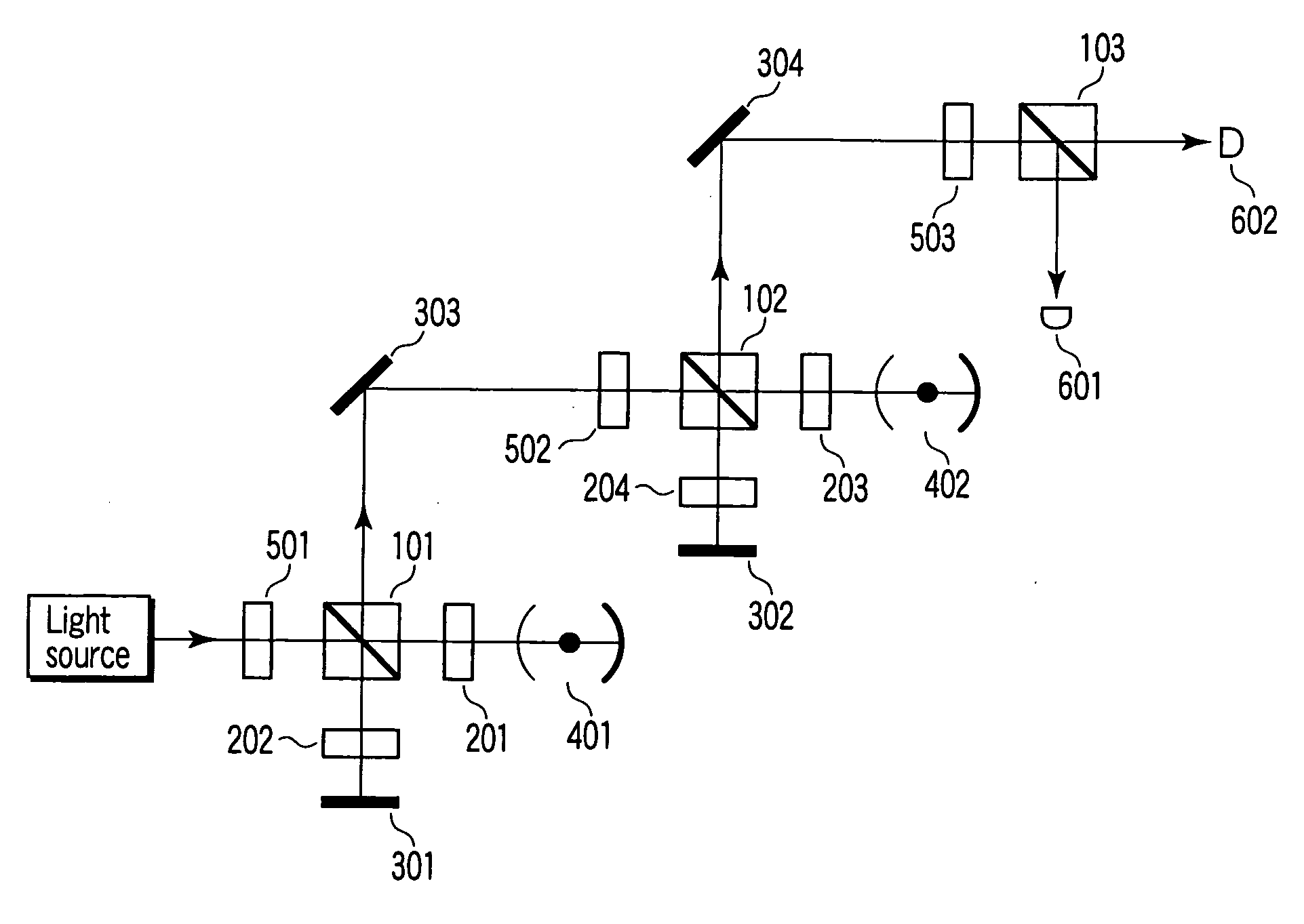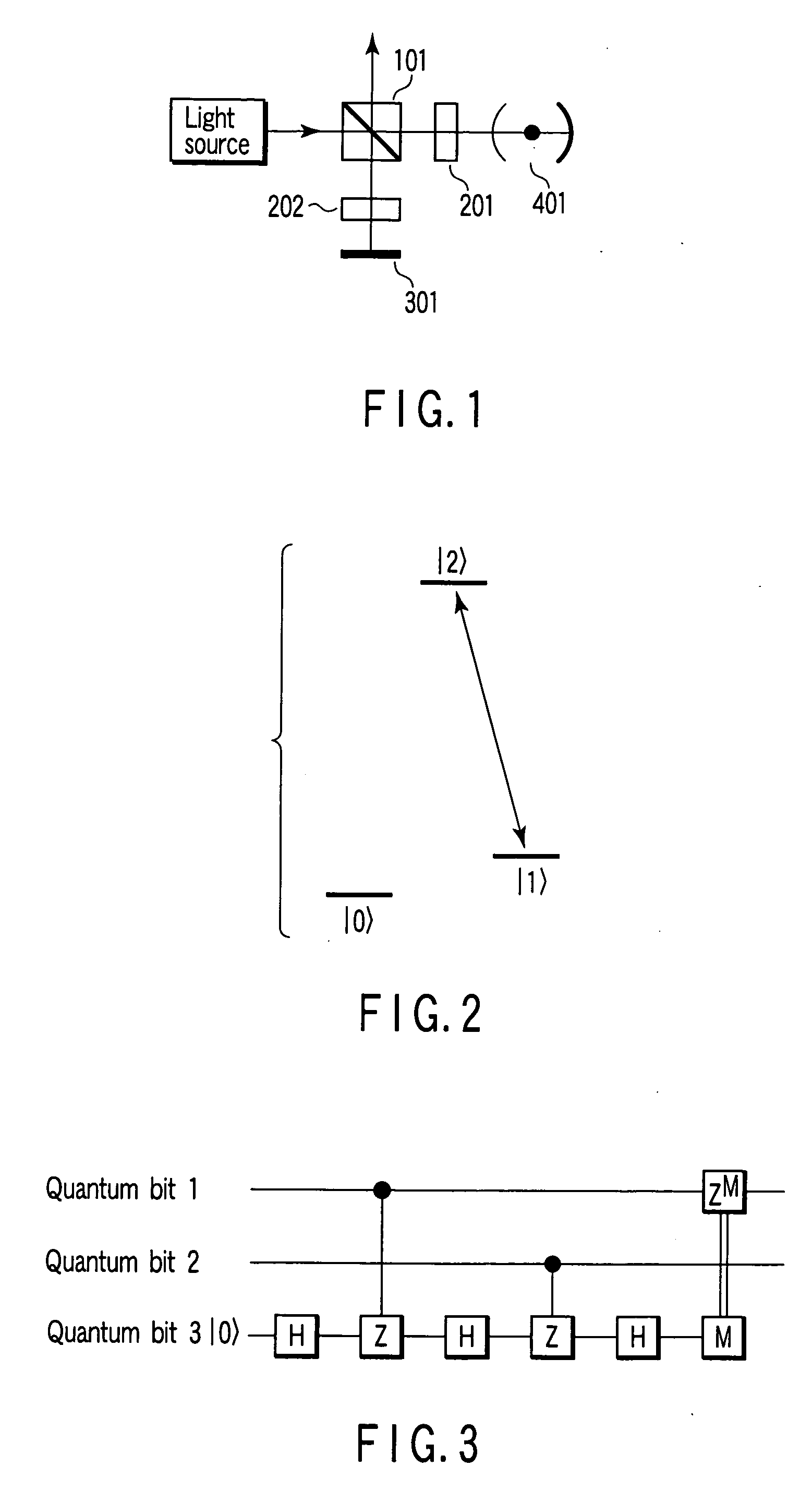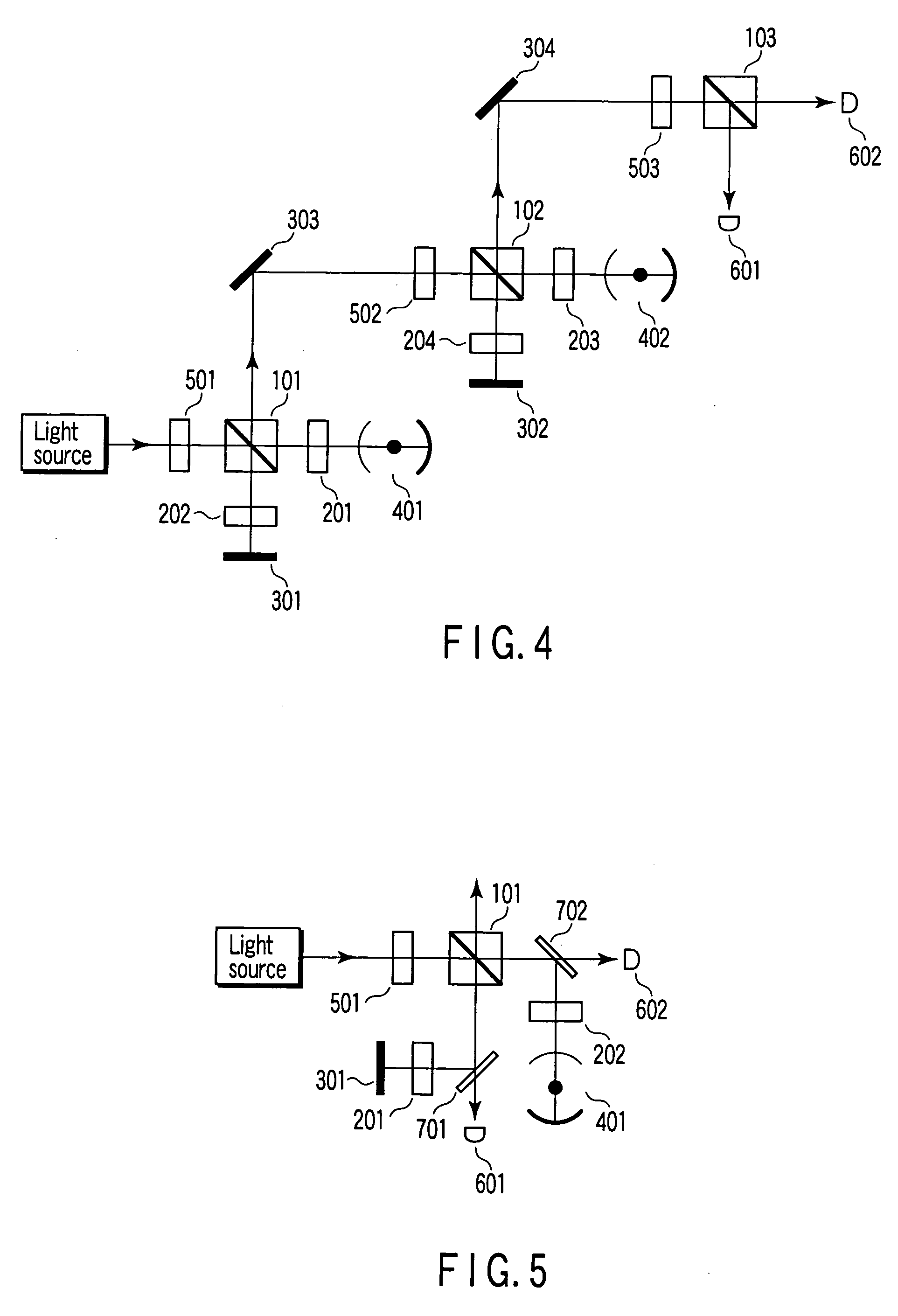Quantum computer and quantum computation method
a quantum computer and computation method technology, applied in the field of quantum computers and quantum computation methods, can solve the problem of not knowing the specific structure of a quantum computer containing three or more quantum bits
- Summary
- Abstract
- Description
- Claims
- Application Information
AI Technical Summary
Benefits of technology
Problems solved by technology
Method used
Image
Examples
example 1
[0126] Referring to FIG. 13, a description will be given of an example of the CZ gate on atomic and photonic quantum bits shown in FIG. 1.
[0127] To confirm whether a CZ gate therebetween is realized or not, bit reading previously described with reference to FIG. 10 is performed. Explaining in more detail, first an atom is preset in a certain known state, then the process shown in FIG. 10 is performed on the atom to measure the state of the atom, and finally it is verified that the measured state corresponds to the preset certain state. When the CZ gate and the bit reading have succeeded, a V-polarized light beam is observed if the preset certain state of the atom is |0>. In contrast, if the preset certain state of the atom is 1>, an H-polarized light beam has to be observed. Accordingly, this example can also be regarded as an example of the reading method.
[0128] In example 1, Pr3+ ions contained in Y2SiO5 crystal are used as atoms having such three levels as shown in FIG. 2. The ...
example 2
[0134] In example 2, a single-photon pulse is guided into a cavity, unlike example 1. In example 1, a weak coherent light beam is guided to the cavity. Referring to FIG. 16, a description will be given of a quantum computer, according to example 2, in which a CZ gate operation is performed on an atom and a photon using a single-photon pulse.
[0135] The right side system of FIG. 16 (i.e., the optical systems located rightward with respect to the PBS 101, acoustooptic modulator 1204 and beam splitter 1008) are similar to those employed in example 1 of FIG. 13 except that the incident light beam is a single-photon pulse. The left side system of FIG. 16 (including the PBS 101, acoustooptic modulator 1204 and beam splitter 1008) are used to generate a single-photon pulse. An optical cavity 1301 included in the left side system is similar to an optical cavity 1302 for a CZ gate.
[0136] A method for generating a single-photon pulse using the left side system will be described. Firstly, a s...
example 3
[0138] Referring to FIG. 17, a description will be given of example 3 related to a CZ gate between two atoms.
[0139] Since it is necessary to guide a light beam to a cavity 1302 to lastly read the state of an atom in the cavity 1302, an optical system including a cavity 1301 is coupled with an optical system including the cavity 1302 via a ring cavity. As shown in FIG. 17, the ring cavity comprises high reflection mirrors 305 and 306, input mirrors 801 and 802, and cavity length adjuster 901.
[0140] Further, the quantum computer shown in FIG. 17 is fundamentally similar in structure to the CZ gate with extensibility shown in FIG. 7, therefore example 3 can also be regarded as an example of the CZ gate with extensibility.
[0141] In example 3, to confirm whether a CZ gate operation between two atoms has succeeded, the fact is noticed that a control NOT gate (CNOT) operation can be performed by three gate operations−(an H gate operation on a target bit)→a CZ gate operation→(an H gate o...
PUM
| Property | Measurement | Unit |
|---|---|---|
| waist radius | aaaaa | aaaaa |
| cavity length | aaaaa | aaaaa |
| resonant frequency | aaaaa | aaaaa |
Abstract
Description
Claims
Application Information
 Login to View More
Login to View More - R&D
- Intellectual Property
- Life Sciences
- Materials
- Tech Scout
- Unparalleled Data Quality
- Higher Quality Content
- 60% Fewer Hallucinations
Browse by: Latest US Patents, China's latest patents, Technical Efficacy Thesaurus, Application Domain, Technology Topic, Popular Technical Reports.
© 2025 PatSnap. All rights reserved.Legal|Privacy policy|Modern Slavery Act Transparency Statement|Sitemap|About US| Contact US: help@patsnap.com



